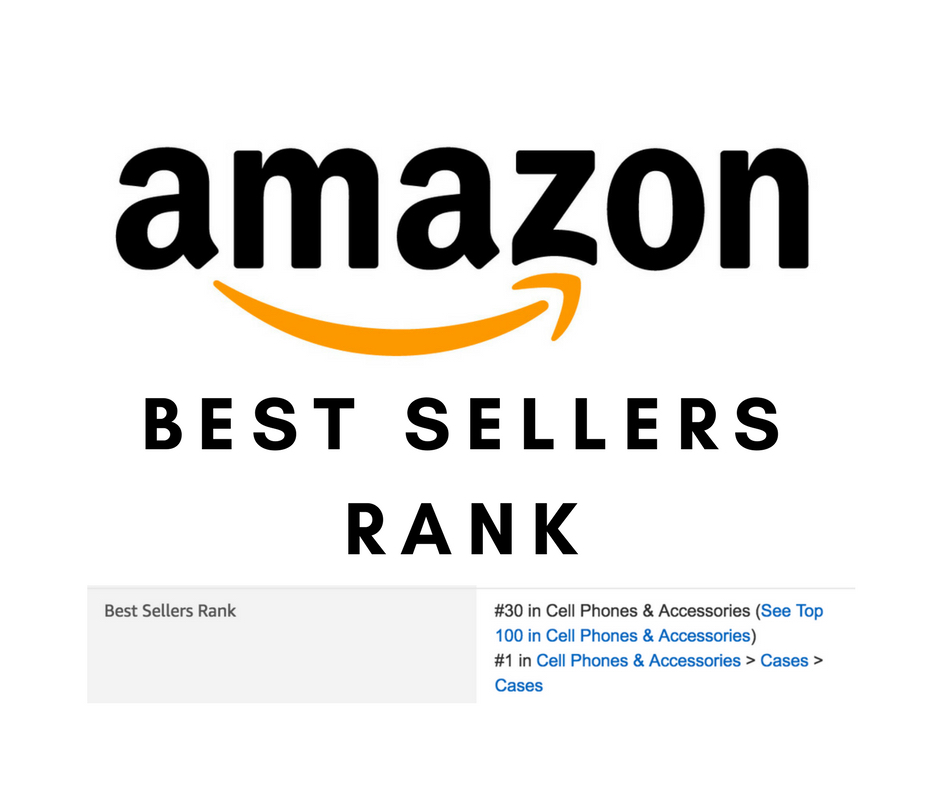Online retailers are always looking for ways to increase sales using whatever tools or strategies available. It’s important to identify new products that can sell well and deliver healthy profits. The problem is that finding these top-selling products can be difficult, especially in very competitive categories. One strategy is to look at a metric Amazon.com provides called the Sales Rank or more recently called the Amazon Best Sellers Rank. While this is not a foolproof method, it does allow you to gain insight into how well a product is recently selling within specific categories.
The Sales Rank (A.K.A. Amazon Best Sellers Rank) is basically an indication of how well a product has recently been selling. Amazon generally updates the Sales Rank hourly so this metric changes very often. Keep in mind that not all products are assigned a Sales Rank. Some products have a Sales Rank and some don’t. If Amazon does assign a Sales Rank to a product, it will be listed on the item detail page in the Product Details section. Sometimes Amazon assigns a Sales Rank for a product in various sub-categories. For example, one TV wall mount may have a Sales Rank of #5 in the TV Ceiling & Wall Mounts sub-category but it can also have a Sales Rank of #19 in the higher order sub-category of Televisions & Video.
The lower the Sales Rank, the better the product tends to perform at that moment in time. For example, a Sales Rank of #5 is much better than a Sales Rank of #75,000 in the same sub-category. Keep in mind that Sales Rank doesn’t necessarily tell you how fast an item will sell. Sales Rank will only indicate how well a product may be selling at that moment in time.
It is also important to remember that the same Sales Rank can mean different things about product performance in different categories. For example, assume that the Home Audio & Theater category has one million products listed in it. A product with a Sales Rank of #100,000 will be in the top 10 percent of all Home Audio & Theater products. Alternatively, assume that the Home & Kitchen category has ten million products. A product with a Sales Rank of #100,000 would fall within the top one percent of all products in the Home & Kitchen category. The same Sales Rank of #100,000 can have a dissimilar meaning about product performance in these two categories. As you can see from this example, a product with a Sales Rank of #100,000 seems to be a better performer in the Home & Kitchen category than it is in the Home Audio & Theater category. Therefore, Sales Rank by itself can be misleading if you don’t factor in the category within which a product is listed.
The Sales Rank for a particular product will tend to inch higher (i.e. get worse) as more time passes without a sale. However, once the item sells again, the Sales Rank for that product may improve significantly (i.e. go down in number) even though it hasn’t sold in a while. Therefore, the product can have a Sales Rank of #2,000,000 one minute and as soon as someone buys it, the item’s Sales Rank can improve and go to #100,000. This can be very misleading to someone trying to use this metric to find good products to sell. Depending on when you look up a product’s sales rank, you would reach a different impression of a product’s performance because a product’s sales rank can be drastically different in a short period of time.
Another ambiguous aspect of Sales Rank has to do with product comparisons. Trying to compare two products with the same Sales Rank can be extremely misleading. This is because (for whatever reason) a product that sells much more frequently may also have a sales rank of #100,000. If you compared this product to the product above, you would think that they both performed similarly well even though one product sells frequently and maintains a Sales Rank of #100,000 and another product sells infrequently and has a Sales Rank that fluctuates often and just happens to be at #100,000 at that moment in time.
Therefore, when choosing what products to sell on Amazon, one should use Sales Rank as only one metric among many other factors to decide if a product will be a good seller or not. The best way to use Sales Rank is to remember that if an item has a good sales rank, it only means that the item has been selling well RECENTLY. This doesn’t mean that the item has always been or always will be a good selling item. This is especially true for products that are seasonal or products that are part of a fad.
If you would like to learn more about succeeding on Amazon.com, read our other blog posts about Amazon and the Fulfillment by Amazon FBA program. You will especially like the post about winning the Amazon Buy Box. This can be yet another way to increase your sales.
Business Consulting Services: If you’re a small business owner looking to start or improve an online business then let me show you how to benefit from my experience. I have helped several online resellers grow their businesses by developing an online strategy to sell on Amazon, eBay or any other marketplace. Call me at 310-574-2541 or email me at Pez@Pezlogic.com for a complimentary business review.






One thought on “How To Use Amazon Sales Rank To Find Good Products To Sell”